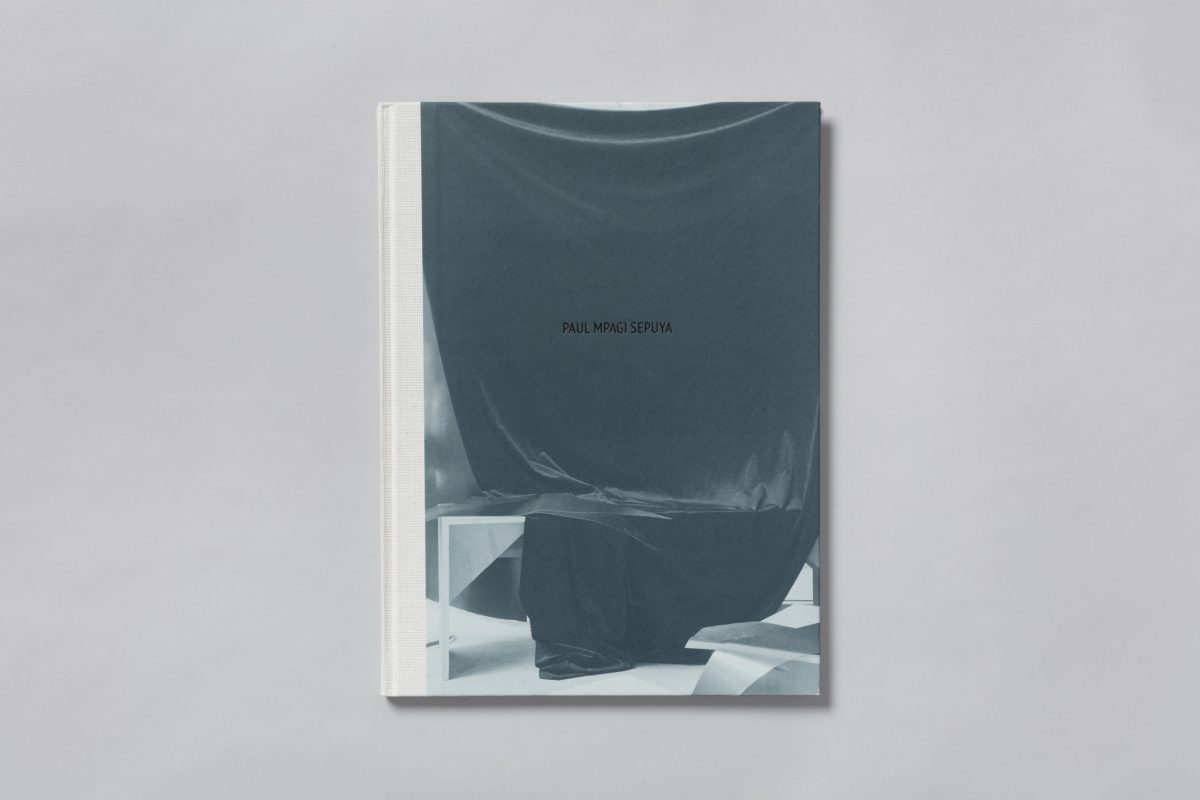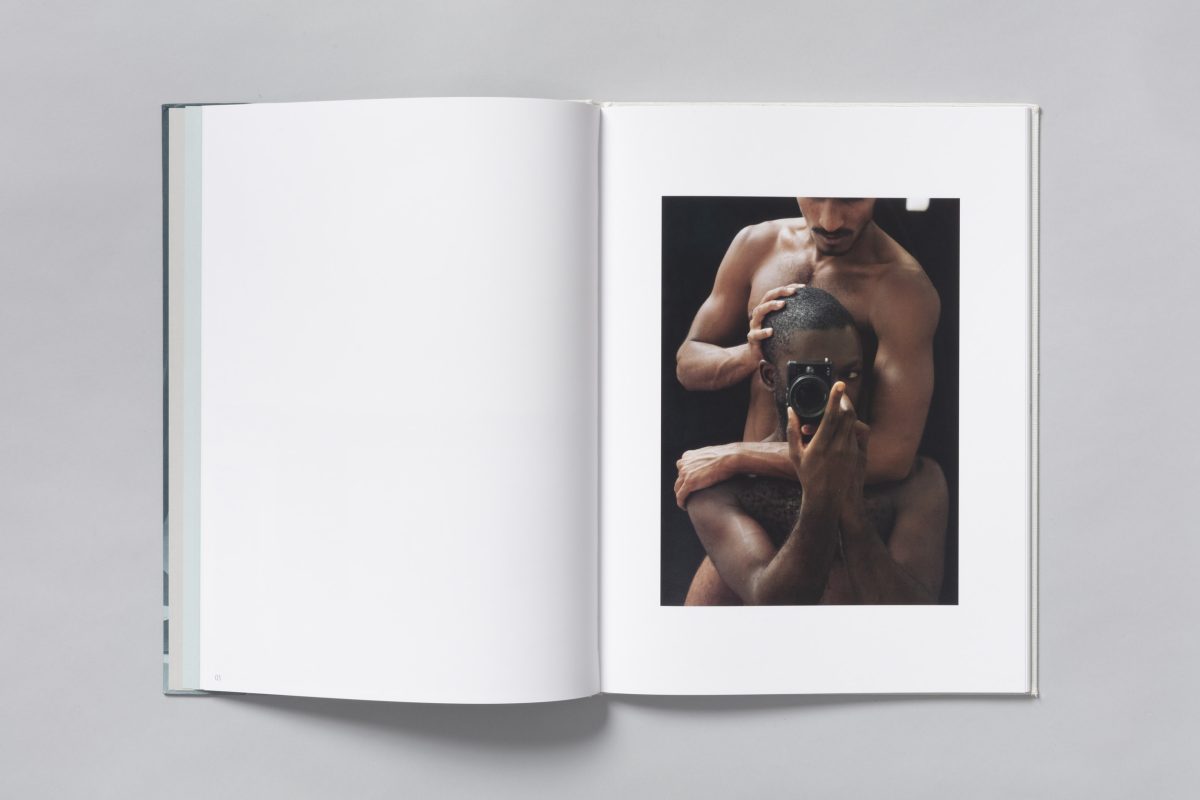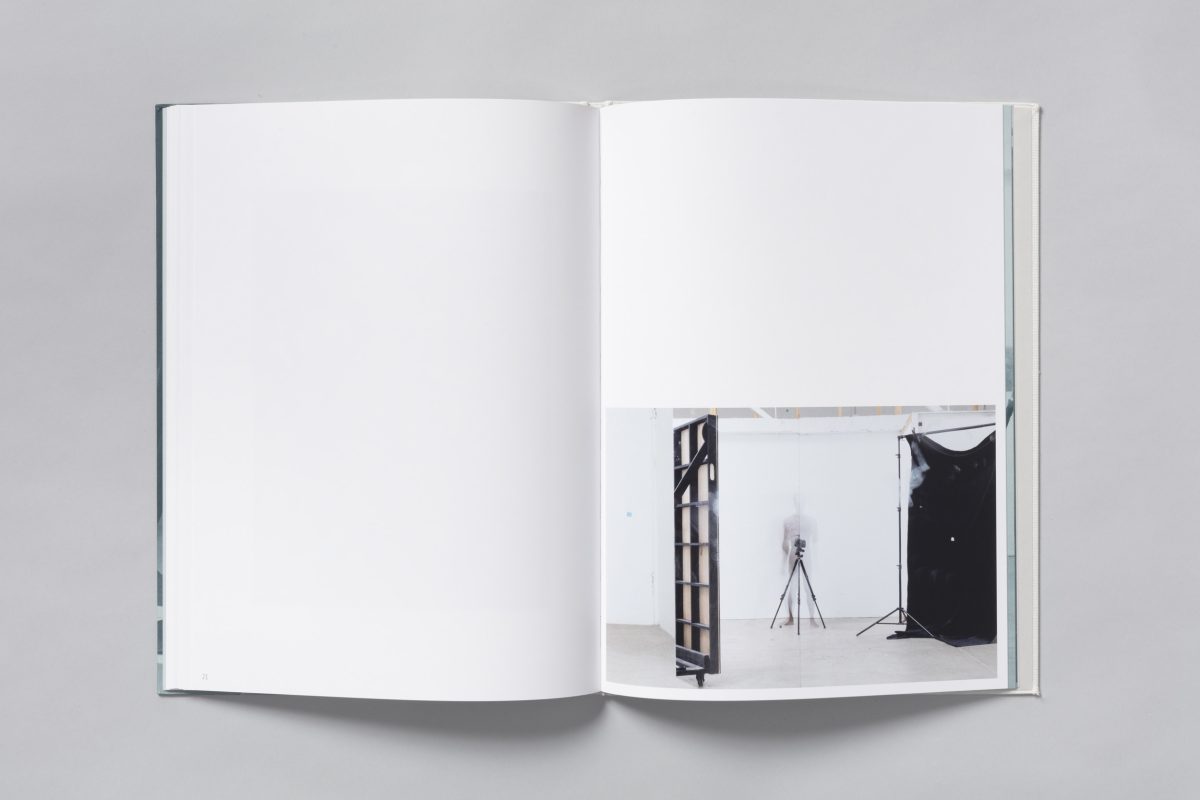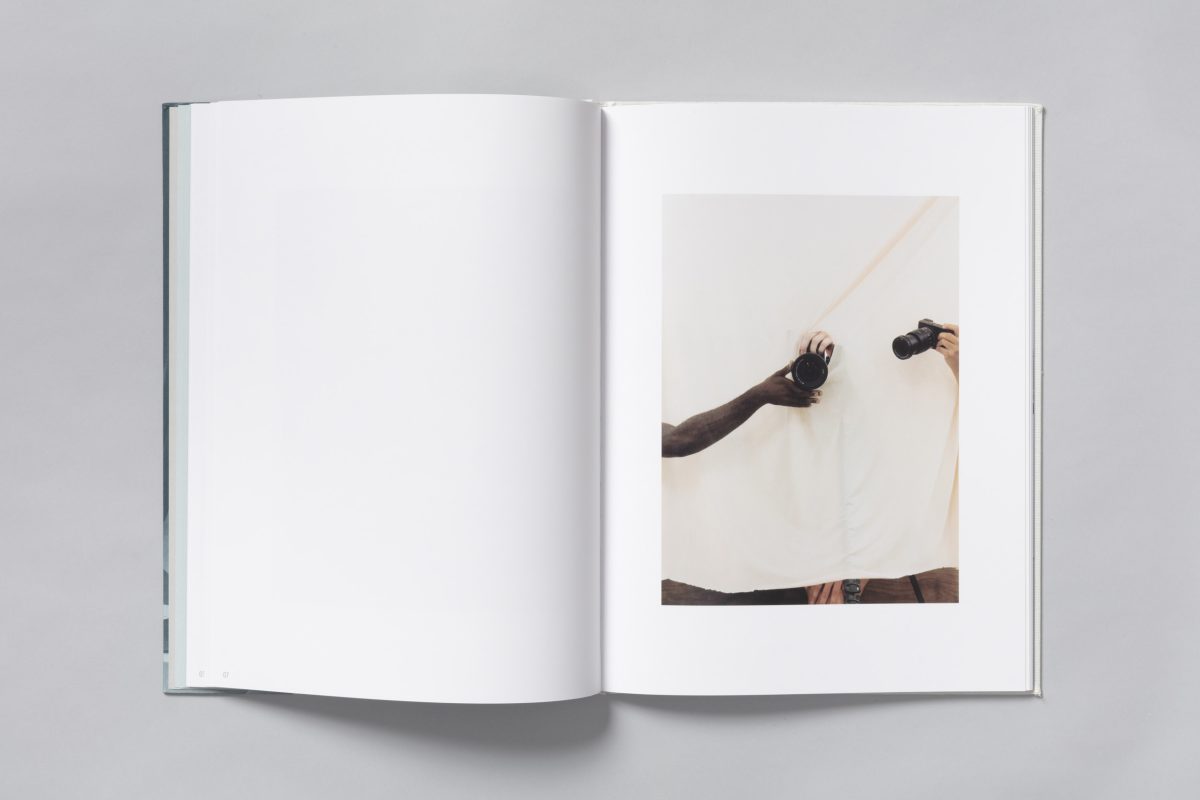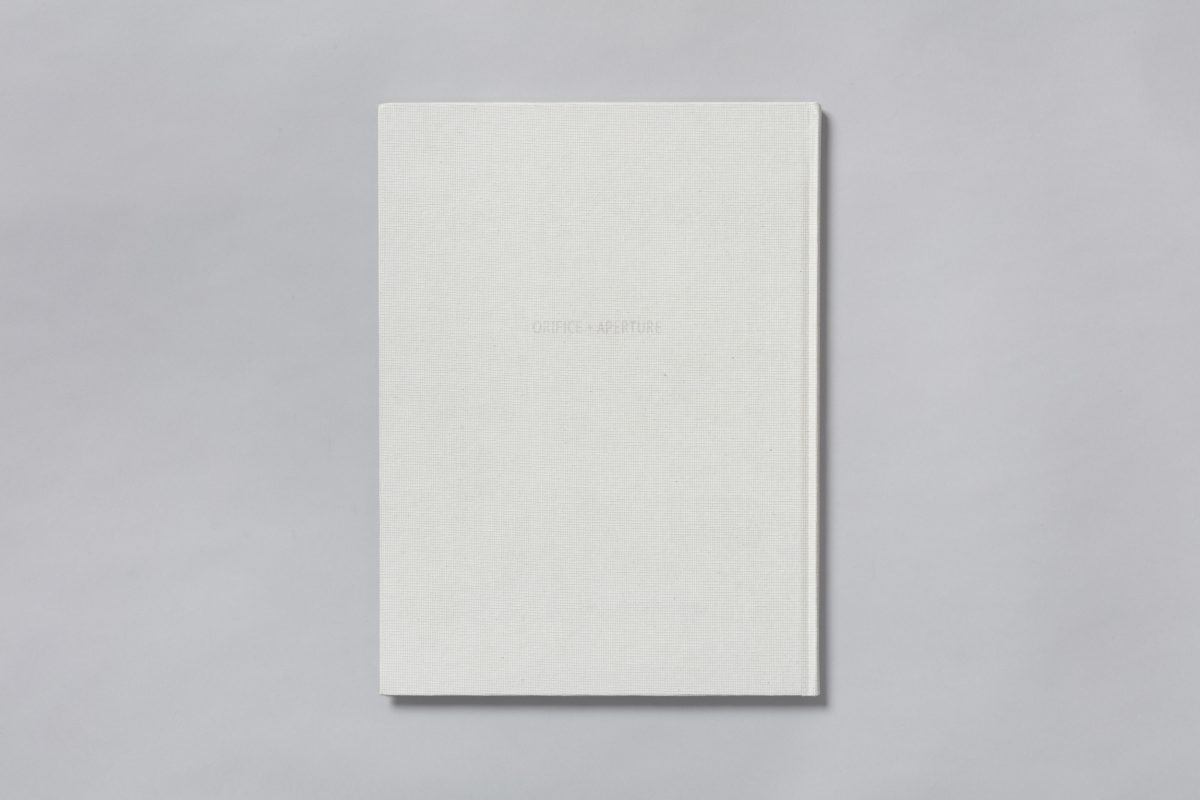Written by Elijah Ndoumbe
For the book review portion of my digital residency with Photoworks, I took a look at Paul Mpagi Sepuya’s Orifice + Aperture (2022) published by TBW Books. To clarify – I am neither an art critic, nor am I a professional arts writer. I am merely an artist, who has taken the time to look at, sit with, and engage another artist’s practice. I am here now to share with you what I witnessed within the work and the ways in which it spoke to me.
Sepuya has long been in conversation with an upending of the traditional studio portrait – using mirrors, carefully draped backdrops, and the naked bodies of both himself and various interlocutors and friends to bring the camera and construction of the photographic image and studio into focus. All of this, while also evoking questions around queer sexuality and contemporary racial dynamics within, around, and between the lens.
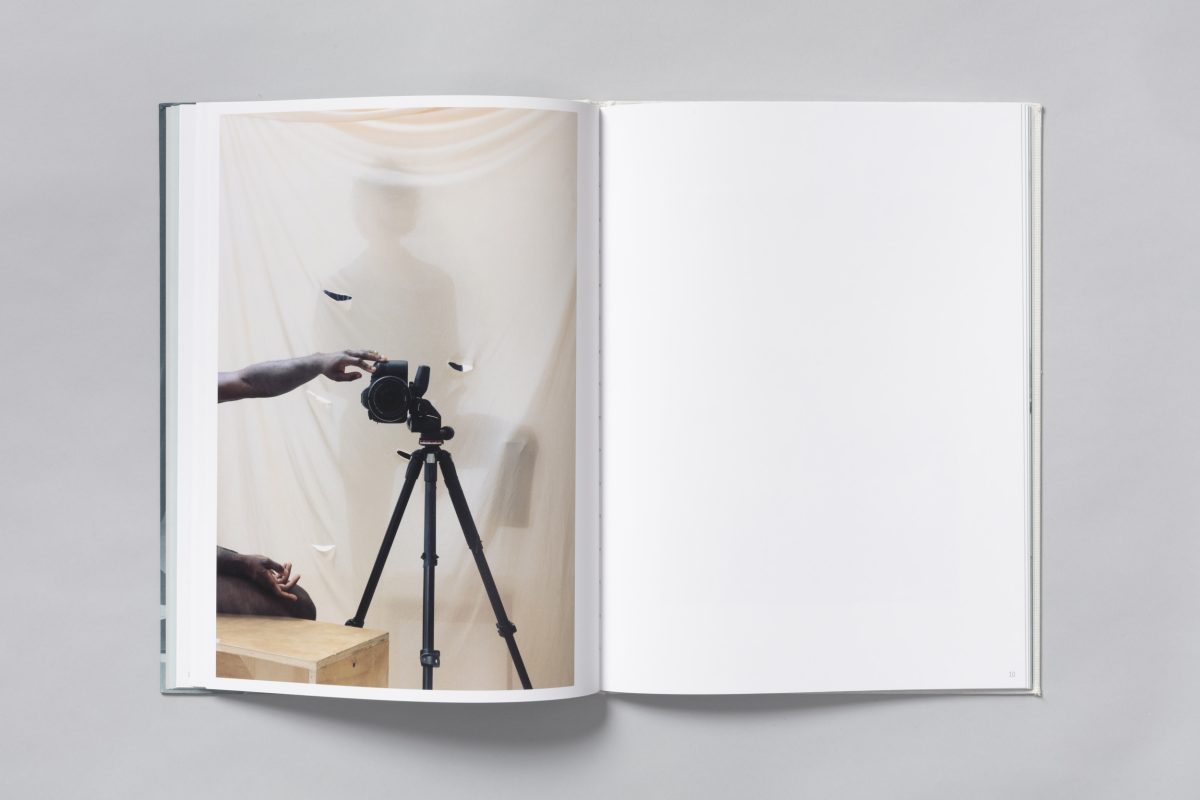
In Orifice + Aperture, there is a gestural phrase to the series. We begin, one after the other, with two landscapes introducing us to a wide vision of Sepuya’s studio space. The first, a mirror reflecting back at us the scene, with the camera sitting on its tripod centered in the slit where the two mirrors meet; a section of a backdrop and stand on the right, an unidentifiable figure clipped by the frame and standing behind another studio panel, to the left. The second landscape is deceiving – an image of the studio reflects back at us, but a mirror cutting into the right side of its composition reveals that what we are looking at is actually a large scale print hanging on the studio’s white wall. The next few sequences take us through black backdropped mirror portraits, including:
- Sepuya seated, holding the camera and obscuring part of his face while someone stands behind him and holds his head, their other arm placed in a gentle headlock around his neck
- the camera resting on the tripod on its own with only the hint of legs revealed in a corner where the black cloth of the backdrop has been lifted
- a sitter, facing away from us and seated on a wooden stool, their face visible via the screen of a smart phone selfie, hand extended in front of them
These playful abstractions continue across a series of subsequent images where the backdrop becomes a cream-colored screen. Across each shot, things are concealed, revealed, imagined: Sepuya’s hand stretched out in front of the cream ‘screen’ to hold the lens ring while a white hand pushes the body of the camera out through an opening (an orifice of sorts) of the fabric to take the photo; the camera, left alone to snap the reflection of silhouetted figures engaging in acts of pleasure behind the creamy backdrop. This continues until we are plunged back into the darkroom via a two page spread of Orifice (0X5A6967), 2018 and Orifice (0X5A6963), 2018.
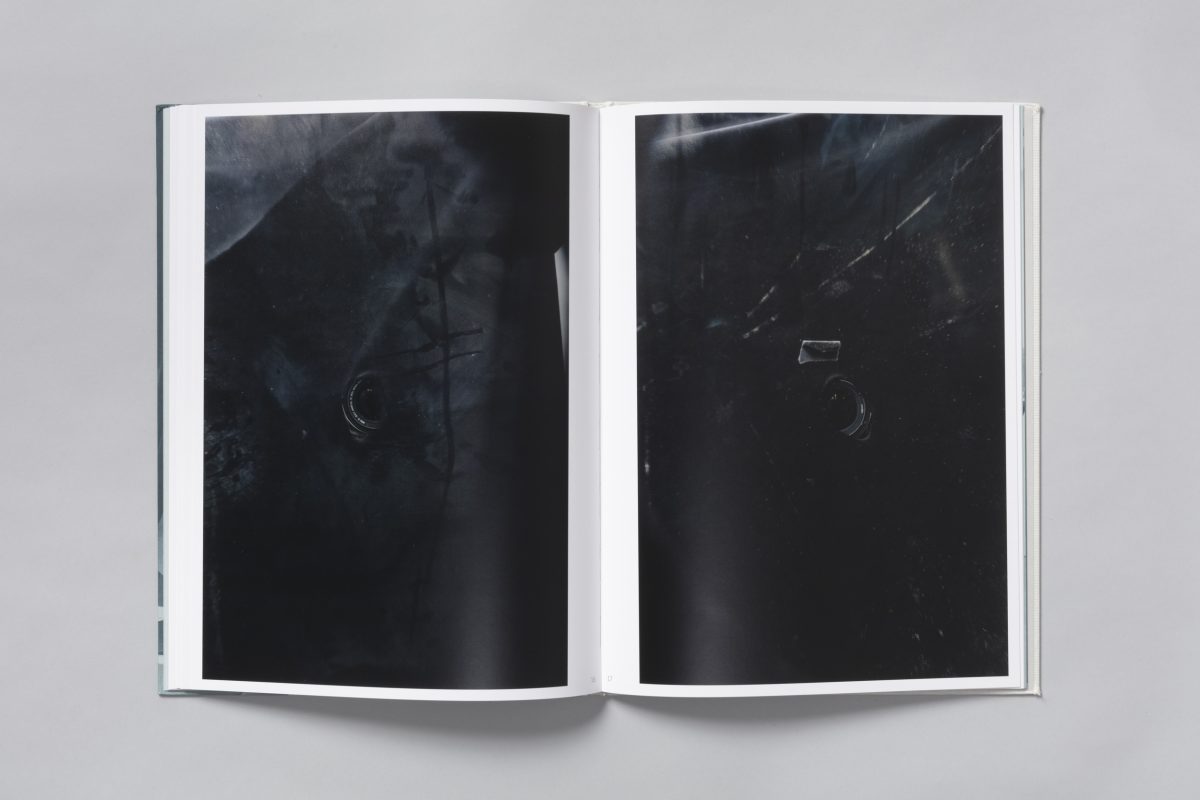
The black backdrop invades the image. The barely noticeable camera lens peeking out from a hole in the dark fabric is a foreshadowing, snapping its reflection in the mirror – which itself is marked, smudged, dirty. The dust smeared across its surface indicates us towards a filter of uncleanliness, or to one of obscurity. Flip the page and the glory hole is realized, a hard and white phallus standing to attention, the only other item a paper clip resting on a wooden table below. The book finishes with a few more portrait shots and ends on a quiet note – a return to the landscape of the studio reflected back at us. This time, Sepuya’s figure stands behind the camera and its tripod – a ghostly figure halved in blurred movement. Not quite locateable. An ode to the fickleness of the camera, the insidious and rather false ambiguity of the lens, the elusive nature of queer and racialized identity and sexuality in a hyper-capitalist and consumerist world.
There are many things to be read and witnessed within Sepuya’s latest book; I won’t be able to do it justice here. He is blazing his own trail in a long line of queer and black artists of the diaspora – with this I think of Rotimi Fani Kayode, Ajamu X – contributing to the creative discourse around the lens and its implications both in its varied (his)tories, and in the current contemporary moment. It was important for me, as an emerging artist who has ties to these identities and communities, to investigate Sepuya’s images. As someone who didn’t formally study art or arts practice, I can find myself like a leaf in the wind when it comes to specific reference points in photography – picked up here, there, searching for critical compositions of what it means to be who we are in the world(s) we inhabit. I am grateful that there are artists like Sepuya pushing the limits of the medium and the image via their own contemporary arts practice, contributing to the larger prism and offering much needed perspective to the discipline.
